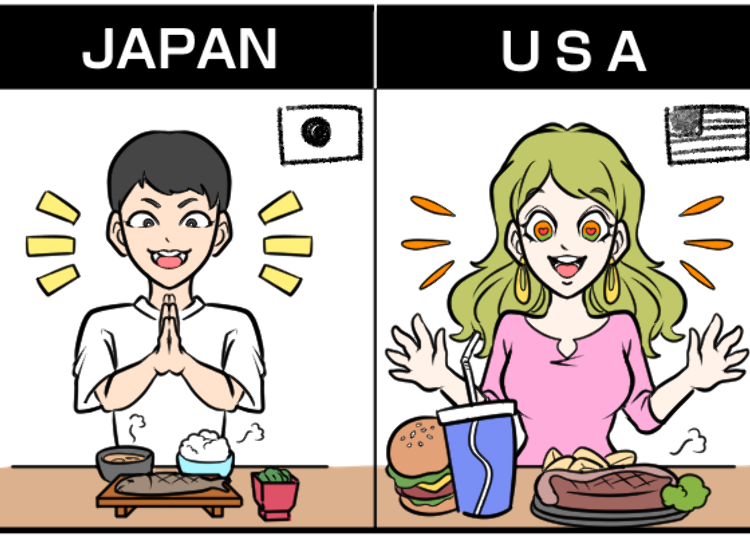
People often say that Japanese and American cultures are "completely opposite"—but what makes them so different? Let’s take a look at seven unique contrasts between the two.
1. Positive vs. Negative Mindset
Japanese culture places a strong emphasis on “shame culture,” leading people to be modest, cautious, and realistic. This mindset can sometimes come across as a bit “negative.” In contrast, Americans tend to embrace a more positive mentality, possibly rooted in their bold, pioneering history.
2. Shoes On or Off?
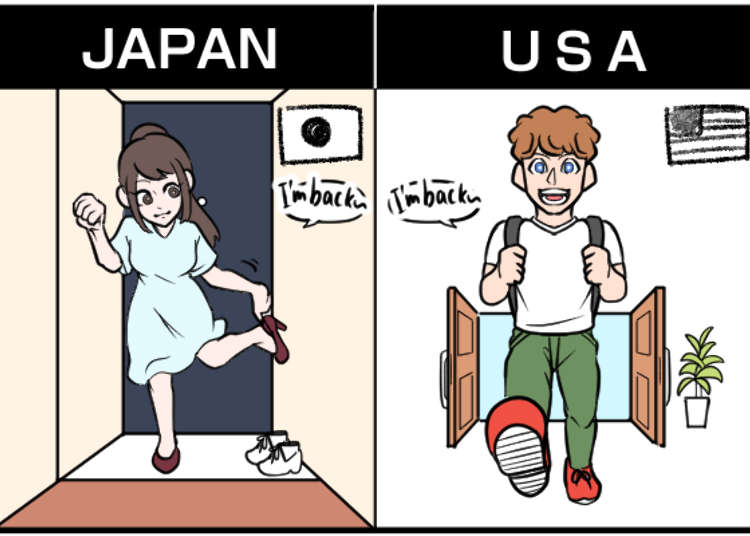
In Japan, it’s customary to take your shoes off when entering a home, especially since traditional tatami mats can easily trap dirt and mud, making cleaning difficult. Plus, futons are laid directly on the floor. Meanwhile, in America, people usually keep their shoes on indoors, as they rarely sit on the floor, and there’s less concern about the cleanliness of indoor floors.
3. Small Houses or Big Houses?
This difference is easy to understand when you consider population density and land area. In Japan, land is limited, so houses are generally smaller. In America, each person has access to a lot more space, which makes larger homes more common.
4. Teamwork vs. Individuality
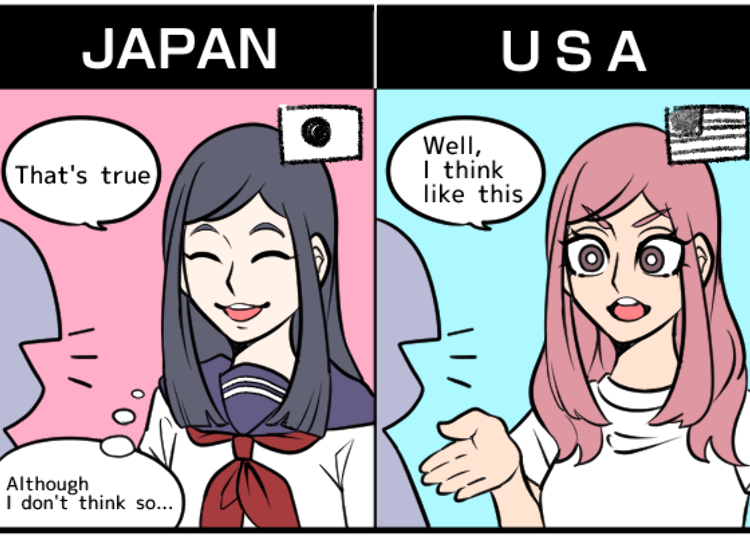
In Japan, there’s a strong focus on harmony and “doing things together.” People might find themselves thinking, “I don’t completely agree, but everyone else does, so I should go along with it.” In America, however, individuality is highly valued, and people are encouraged to express their unique perspectives to be understood by others.
5. Working on Weekends?
Japanese people often feel obligated to respond to work-related calls even on weekends or holidays. This can be frustrating but is expected to maintain workplace harmony. On the other hand, Americans tend to value personal freedom and dislike being bound by work on their days off, so they’re less likely to work on weekends.
6. Eating a Little or Eating a Lot?
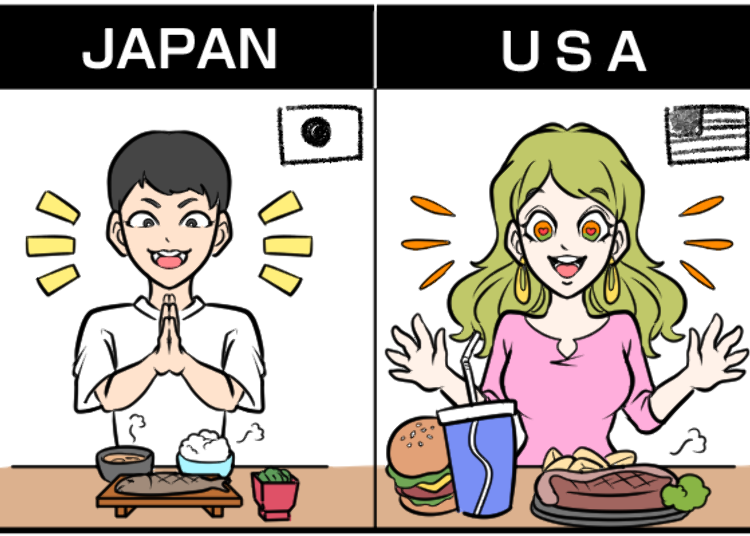
One thing that surprises each culture is how much the other eats at a typical meal! In Japan, it’s seen as polite to finish everything on your plate, and portion sizes are usually smaller. Americans, however, are used to larger portions, and taking home leftovers is common, with “to-go” boxes widely available.
7. Public Affection: Reserved vs. Bold
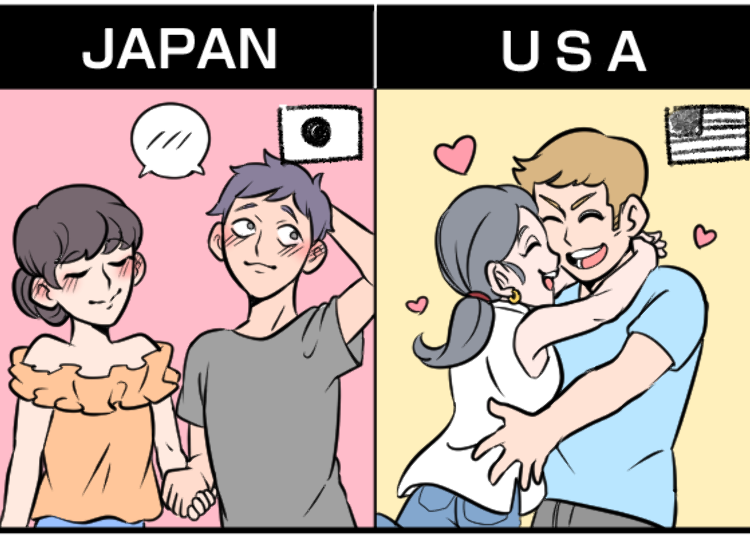
Japanese people are generally cautious about showing affection in public, such as kissing or holding hands, as it may make others around them uncomfortable. Americans, on the other hand, tend to be expressive and show affection freely, often displaying love openly with gestures and body language.
From these cultural traits and traditions, we can see how Japanese and American people differ in their daily lives. Of course, beyond these differences, there are many similarities too! Understanding and accepting each other’s values can help build strong and respectful connections across cultures.
Illustrations courtesy of Manga de Japan
*Prices and options mentioned are subject to change.
*Unless stated otherwise, all prices include tax.
Popular Tours & Activitiess
Recommended places for you
-

Kambei Sannomiyahonten
Yakiniku
Kobe, Sannomiya, Kitano
-
Appealing

Rukku and Uohei
Izakaya
Sapporo / Chitose
-

Jukuseiniku-to Namamottsuarera Nikubaru Italian Nikutaria Sannomiya
Izakaya
Kobe, Sannomiya, Kitano
-
Goods
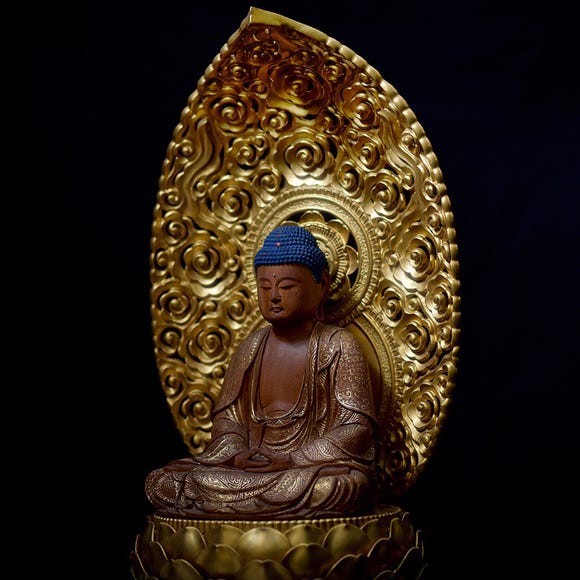
Yoshida Gennojo-Roho Kyoto Buddhist Altars
Gift Shops
Nijo Castle, Kyoto Imperial Palace
-

Kanzenkoshitsuyakinikutabehodai Gyugyu Paradise Sannomiya
Yakiniku
Kobe, Sannomiya, Kitano
-

ISHIDAYA Hanare
Yakiniku
Kobe, Sannomiya, Kitano
-

A Don Quijote Like No Other: Step Inside the All-New Tourist-Friendly Store at Shinjuku Tonanguchi Bekkan
by: Chehui Peh
-
Ad

Get Your Perfect Custom Suit at GINZA Global Style PREMIUM Ginza Honten: Choose from 5,000 Fabrics, Starting at 26,400 Yen (incl. tax)!
-

10 Must-Buy Cosmetics at Don Quijote (2025 Edition)
-

Autumn in Japan 2025: Fall Foliage Forecast & Where to Enjoy the Colorful Leaves (+Tour Info)
-
Ad

Ohta’s Isan Gets a Refresh: Introducing the New Ohta’s Isan S and Ohta’s Isan <Sachet> S with Updated Packaging and Improved Benefits
-
Ad

Feeling Unwell While Traveling? HOTEL de DOCTOR 24 is Japan's Sole 24-Hour Online Medical Consultation Service
-

You Won't Believe Why Japan Goes Wild for These Spring Strawberry Desserts in 2021!
by: Ran Tanaka
-

Hugely Popular with Foreign Tourists in Tokyo! Check Out These 9 Popular Japanese Souvenirs for Summer 2018
-

Tokyo to Sendai: Riding the Shinkansen to Japan's Stunning Spots
-

Step into History at the Ofune World Heritage Site: Explore Hokkaido's Jomon Culture
-

Going Beyond Sushi: What foods to try at an Izakaya – Japanese style pub?
-

5 Popular Shops and Gift Ideas Along Arashiyama Shopping Street
- #best sushi japan
- #what to do in odaiba
- #what to bring to japan
- #new years in tokyo
- #best ramen japan
- #what to buy in ameyoko
- #japanese nail trends
- #things to do japan
- #onsen tattoo friendly tokyo
- #daiso
- #best coffee japan
- #best japanese soft drinks
- #best yakiniku japan
- #japanese fashion culture
- #japanese convenience store snacks












